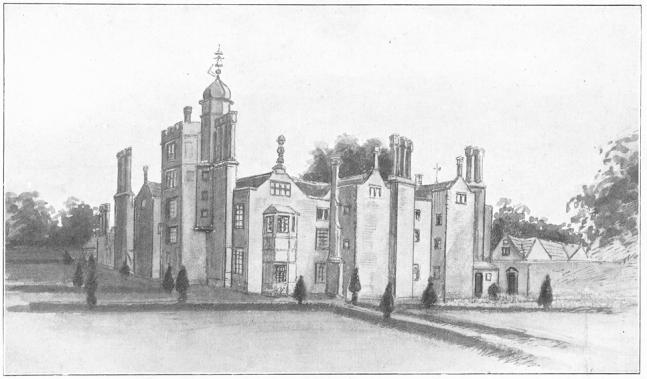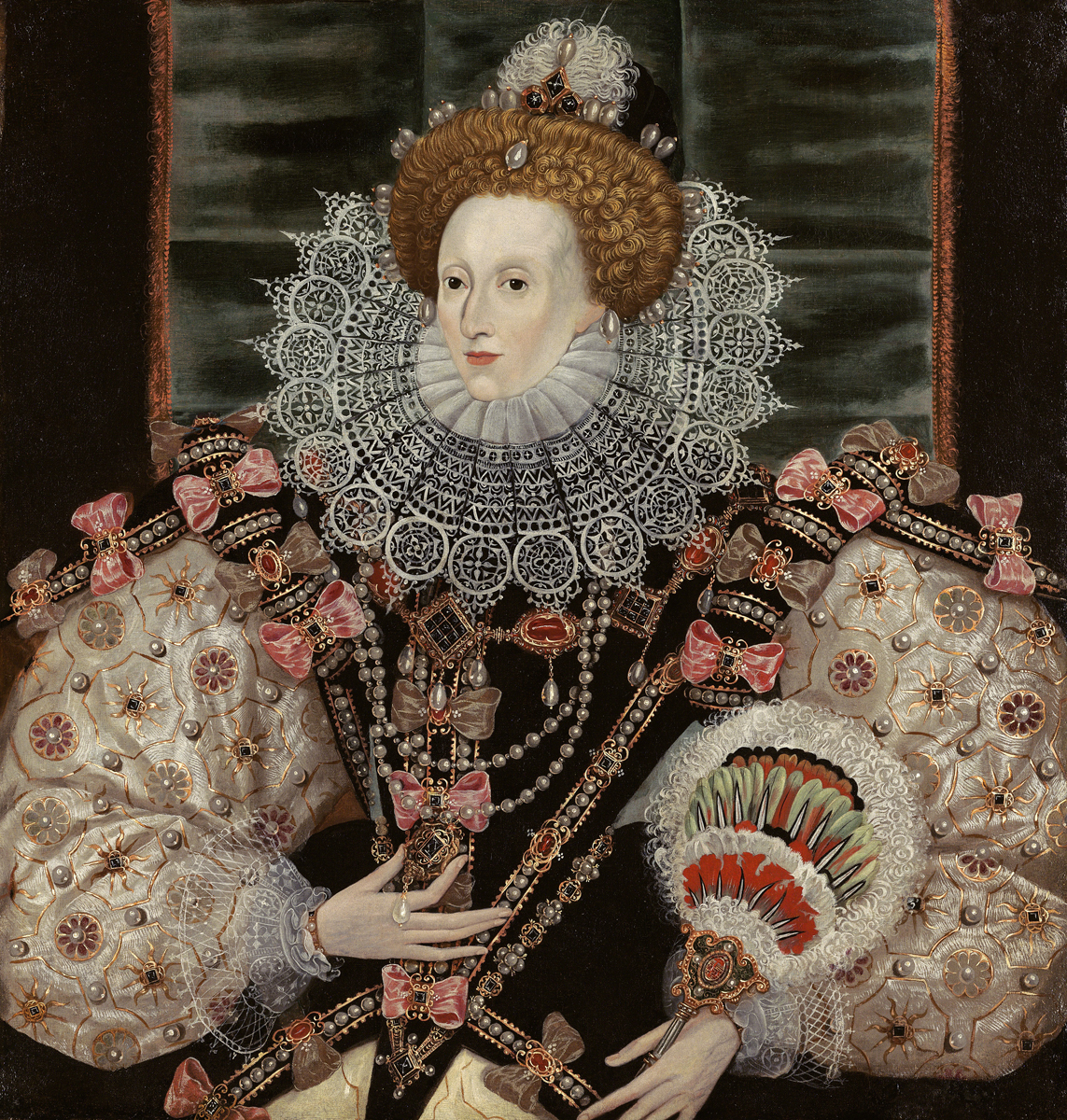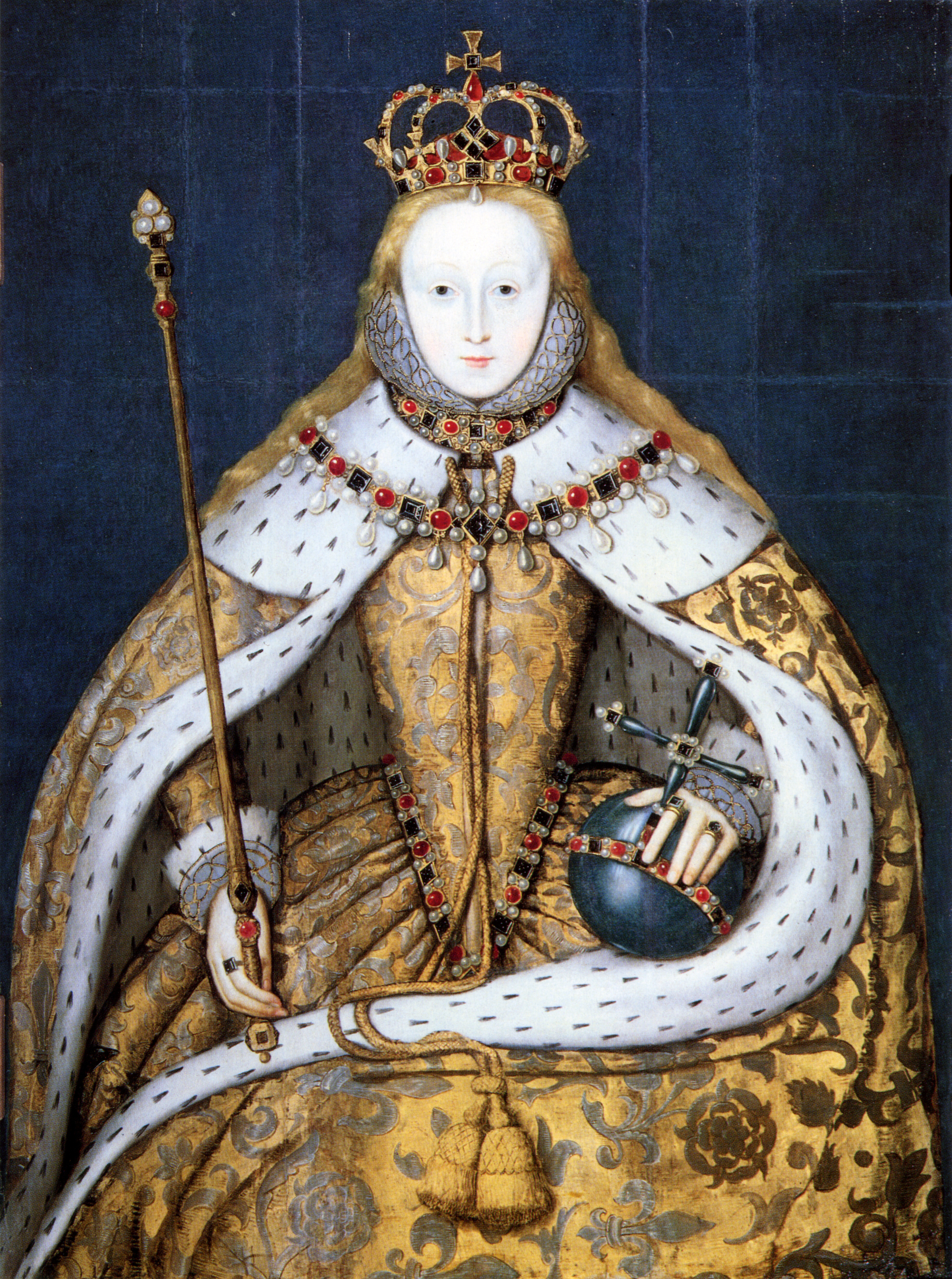|
John Habington
John Habington or Abington (died 1581) was an English courtier and administrator. Career A son of Richard Habington and his wife Eleanor Hanley of Hanley William, John Habington's parental home was at Brockhampton near Bromyard in Herefordshire. Berwick-upon-Tweed Habington served the royal court in various administrative and financial roles. In October 1557 he was stationed at Berwick-upon-Tweed, involved in the supply of rations for the garrison and army. He was made Surveyor-General of the Victuals at Berwick. The Earl of Northumberland was pleased by the provisions for his house, but Habington discussed his resignation with the Privy Council in April 1559. This role of victualler at Berwick officially ended in November 1560, and Habington was instructed to give his accounts and the custody of storehouses at Berwick and Lindisfarne to Valentine Browne the new Surveyor General of Berwick. Browne had not arrived by 23 February 1561, when Habington wrote to William Cecil from ... [...More Info...] [...Related Items...] OR: [Wikipedia] [Google] [Baidu] |
Hanley William
Hanley William is a village in Worcestershire, England. It is part of Hanley civil parish. Hanley William was in the upper division of Doddingtree The Hundred of Doddingtree was granted to Ralph Todeni, or ''Ralph de Toni'', a relative of the Duke of Normandy, in 1066 by William the Conqueror as a reward for his services as Standard bearer during the Norman Conquest. It consisted mainly of ... Hundred. Hanley William Air Strip There is a small, private airfield with a single 600-metre-long grass runway, called the Hanley William Air Strip. References External links * Airports in the West Midlands (region)[...More Info...] [...Related Items...] OR: [Wikipedia] [Google] [Baidu] |
Hallow, Worcestershire
Hallow is a village and civil parish beside the River Severn, about north-west of Worcester in Worcestershire. The village is on the A443 road that links Worcester with Holt Heath. Hallow has a public house, a post office and a Church of England primary school. Following the Poor Law Amendment Act 1834 Grimley Parish, of which Hallow was then part, ceased to be responsible for maintaining the poor in its parish. This responsibility was transferred to Martley Poor Law Union. History Prehistory There is evidence of human presence from the paleolithic period, roughly 700,000-500,000 years ago. Flint axe heads were found near Hallow in the 1970s. Toponym In the 9th century the toponym was recorded as ''Halhegan'', ''Heallingan'' and ''Halnegan''. In the 11th century it was recorded as ''Halhegan'' and ''Hallhagan'', while in the 13th century it was ''Hallawe'', ''Hallaye'' or ''Hallag''.Victoria County History, 1913, pages 367-372 Manor The earliest record of the manor of ... [...More Info...] [...Related Items...] OR: [Wikipedia] [Google] [Baidu] |
Gunpowder Plot
The Gunpowder Plot of 1605, in earlier centuries often called the Gunpowder Treason Plot or the Jesuit Treason, was a failed assassination attempt against King James I by a group of provincial English Catholics led by Robert Catesby who sought to restore the Catholic monarchy to England after decades of persecution against Catholics. The plan was to blow up the House of Lords during the State Opening of Parliament on 5 November 1605, as the prelude to a popular revolt in the Midlands during which King James's nine-year-old daughter, Elizabeth, was to be installed as the Catholic head of state. Catesby may have embarked on the scheme after hopes of securing greater religious tolerance under King James I had faded, leaving many English Catholics disappointed. His fellow contributors were John and Christopher Wright, Robert and Thomas Wintour, Thomas Percy, Guy Fawkes, Robert Keyes, Thomas Bates, John Grant, Ambrose Rookwood, Sir Everard Digby and Francis Tresham. Faw ... [...More Info...] [...Related Items...] OR: [Wikipedia] [Google] [Baidu] |
William Parker, 4th Baron Monteagle
William Parker, 13th Baron Morley, 4th Baron Monteagle (15751 July 1622), was an English peer, best known for his role in the discovery of the Gunpowder Plot. In 1605 Parker was due to attend the opening of Parliament. He was a member of the House of Lords as Lord Monteagle, the title on his mother's side. He received a letter; it appears that someone, presumably a fellow Catholic, was afraid he would be blown up. The so-called Monteagle letter survives in the National Archives (SP 14/216/2), but its origin remains mysterious. Early life William was the eldest son of Edward Parker, 12th Baron Morley (died 1618), and of Elizabeth Stanley, daughter and heiress of William Stanley, 3rd Baron Monteagle (died 1581). He had both a younger brother, Charles, and a younger sister, Mary. William's father was a recusant, but appears to have been in favour at court; he was one of the noblemen who tried Mary, Queen of Scots. However, William was allied with many Roman Catholic families, a ... [...More Info...] [...Related Items...] OR: [Wikipedia] [Google] [Baidu] |
William Habington
William Habington (4 November 1605 – 30 November 1654) was an English poet. Life Habington was born at Hindlip Hall, Worcestershire, and belonged to a well-known Catholic family. His father, Sir Thomas Habington, an antiquary and historical scholar, had been implicated in the plots on behalf of Mary, Queen of Scots; his uncle, Sir Edward Habington, was beheaded in 1586 on the charge of conspiring against Elizabeth I in connection with Sir Anthony Babington; while to his mother, Mary Habington, was attributed the revelation of the Gunpowder Plot. The poet received his education in Paris and Saint-Omer. The information given by Anthony à Wood in his ''Athenae'' that Habington returned to England "to escape the importunity of the Jesuits to join their order" rests only on a vague statement made by the ex-Catholic James Wadsworth in his ''English Spanish Pilgrim''. He married about 1632 Lucy, second daughter of Sir William Herbert, 1st Baron Powis, the dedicatee of his first bo ... [...More Info...] [...Related Items...] OR: [Wikipedia] [Google] [Baidu] |
Edward Parker, 12th Baron Morley
Edward Parker, 12th Baron Morley (c. 1550 – 1618) was an English peer, Lord of Morley, Hingham, Hockering, &c., in Norfolk, the son of Henry Parker, 11th Baron Morley and Lady Elizabeth Stanley. His second daughter was Frances Danby. His first wife was Elizabeth Stanley (daughter of William Stanley, 3rd Baron Monteagle and Anne Leybourne); their children were * William Parker, 13th Baron Morley (Lord Monteagle of the Gunpowder Plot fame) * Frances Parker, wife of Christopher Danby of Thorpe Perrow, Yorkshire, and of Farnley, Leeds, West Riding of Yorkshire. The 1607 marriage of his daughter Frances to Christopher Danby was confused. Danby had been promised £1,000 as part of the marriage arrangements. However the £1,000 never arrived and as a result Danby did not live full time with his wife. Three children were born but the couple remained in dispute. Frances was accused of recusancy and before her died Danby sent a son away to school with instructions that the son's ... [...More Info...] [...Related Items...] OR: [Wikipedia] [Google] [Baidu] |
Chertsey
Chertsey is a town in the Borough of Runnymede, Surrey, England, south-west of central London. It grew up round Chertsey Abbey, founded in 666 CE, and gained a market charter from Henry I. A bridge across the River Thames first appeared in the early 15th century. The River Bourne through the town meets the Thames at Weybridge. The Anglican church has a medieval tower and chancel roof. The 18th-century listed buildings include the current stone Chertsey Bridge and Botleys Mansion. A curfew bell, rung at 8 pm on weekdays from Michaelmas to Lady Day ties with the romantic local legend of Blanche Heriot, marked by a statue of her and the bell at Chertsey Bridge. Green areas include the Thames Path National Trail, Chertsey Meads and a round knoll (St Ann's Hill) with remains of a prehistoric hill fort known as Eldebury Hill. Pyrcroft House dates from the 18th century and Tara from the late 20th. Train services are run between Chertsey railway station and London Waterlo ... [...More Info...] [...Related Items...] OR: [Wikipedia] [Google] [Baidu] |
Thorpe Park
Thorpe Park Resort, commonly known as Thorpe Park, is an amusement park located in the village of Thorpe between the towns of Chertsey and Staines-upon-Thames in Surrey, England, southwest of Central London. It is operated by Merlin Entertainments and includes rides, themed cabins, live events and '' Stealth'', the United Kingdom's fastest rollercoaster. In 2019 Thorpe park was the UK's third most visited theme park (1.9 million visitors), behind Alton Towers and Legoland Windsor. However, in 2020, due to the coronavirus pandemic, the park only had a 125-day operation season, along with limited capacity, leading to massively reduced visitor numbers. Despite this, Thorpe Park was the second most attended theme park in the UK in 2020, behind Alton Towers. After demolition of the Thorpe Park Estate in the 1930s, the site became a gravel pit managed by Ready Mix Concrete (RMC). When the pits were expended, RMC regenerated the site for leisure, opening Thorpe Park as an outdoor ac ... [...More Info...] [...Related Items...] OR: [Wikipedia] [Google] [Baidu] |
Thomas Habington
Sir Thomas Habington or Abington (1560–1647) was an English antiquarian, son of John Habington and Catherine Wykes, and the brother of Edward Habington. His father, who was treasurer to Queen Elizabeth, had him educated at Oxford, Reims, and Paris. For six years he was imprisoned in the Tower, being accused, with his brother Edward, of having taken part in the Babington Plot to effect the escape of Mary, Queen of Scots. On his release he retired to Hindlip Hall in Worcester, where he gave asylum to the Jesuit Fathers, Henry Garnett and Edward Oldcorne, accused of complicity in the Gunpowder Plot. For this he was condemned to death, but through the intervention of his brother-in-law, Lord Monteagle, the sentence was commuted. His "History of Edward IV" was published after his death by his son William Habington. He also published the first English translation of Gildas's ''De Excidio et Conquestu Britanniae'', which Sir Thomas completed during his imprisonment in the Tower.Gild ... [...More Info...] [...Related Items...] OR: [Wikipedia] [Google] [Baidu] |
Utterby
Utterby is a village and civil parish in the East Lindsey district of Lincolnshire, England. It is situated on the A16 road, south from Grimsby and north from Louth. Utterby railway station (or Utterby Halt), on the line between Grimsby and Louth, closed in 1961. Near to the Village is the site of a former Gilbertine priory. It is believed that the monks of this priory built the village's Packhorse bridge in the 14th century. The Prime Meridian passes to the east of Utterby. Toponymy The name Utterby comes from the Scandinavian 'by' which means village, and is a common place name suffix in the area. The 'utter' comes from the Old English 'uttera', cognate with the modern English word 'outer', or remote, and not the modern Swedish 'utter' which means otter. Therefore, to the Vikings this was 'the remote village'.'' This is a common construction also seen in Itterby, one of the parishes which formed Cleethorpes, and also Ytterby in Sweden, which is relatively frequent in ... [...More Info...] [...Related Items...] OR: [Wikipedia] [Google] [Baidu] |
Walter Fyshe
Walter Fyshe (died 1585) was a London tailor who worked for Elizabeth I until 1582. He also made some of her farthingales. Fyshe made the queen's ceremonial clothes and coronation robes, altering robes made for the coronation of Mary I of England. Career Fyshe in mentioned in the royal accounts for 1557. He was a member of the Merchant Taylor's Company.Fyshe was sometimes asked to adjudicate disputed tailor's bills. He inspected the accounts of a tailor called Molde who had made clothes for Anne, the wife of Henry Mewtas (a son of Peter Meutas), in 1566. The case note mentions that Fyshe lived in Budge Row. Some garments made for Elizabeth involved the use of patterns called "toiles" which were sent to France for completion. Some clothes were partly made in France and finished by Fyshe. Elizabeth was interested in the fashions of other European courts, and in 1567 the ambassador Henry Norris was asked to recruit a tailor in Paris who could make apparel in the Italian and French ... [...More Info...] [...Related Items...] OR: [Wikipedia] [Google] [Baidu] |
Chamberer
A chamberer was a female attendant of an English queen, queen consort, or princess. There were similar positions in aristocratic households. Chamberers at court At court, the position was similar to a male groom of the privy chamber. The names of ten women who served Elizabeth I as chamberers are known. They were daughters of landowning gentry families. Duties could include some domestic labour, embroidery, and administration, as well as attendance on the queen. The details of the distinctions between women of the chamber and hierarchy can be obscure. Other servants present in the royal lodging who carried out laundry work were of lower status than chamberers, and were called "lavenders". Chamberers would embroider and launder some linen items, especially ruffs. In Scotland, Elizabeth Gibb, took on this role for Anne of Denmark, the queen consort of James VI and I, in 1590, making and looking after ruffs and other garments. Usually the queen was served by four chamberers at any on ... [...More Info...] [...Related Items...] OR: [Wikipedia] [Google] [Baidu] |



.jpg)


